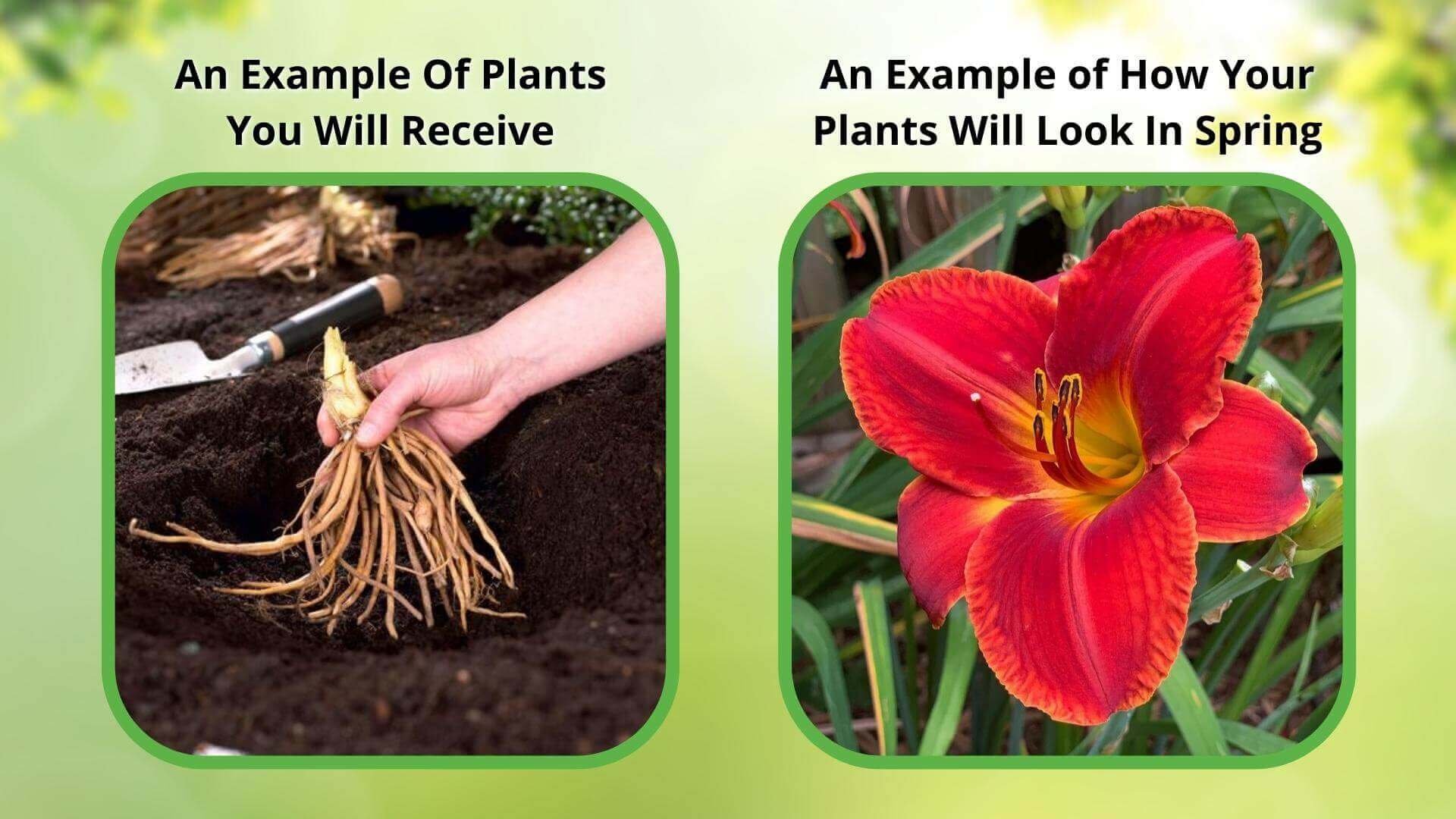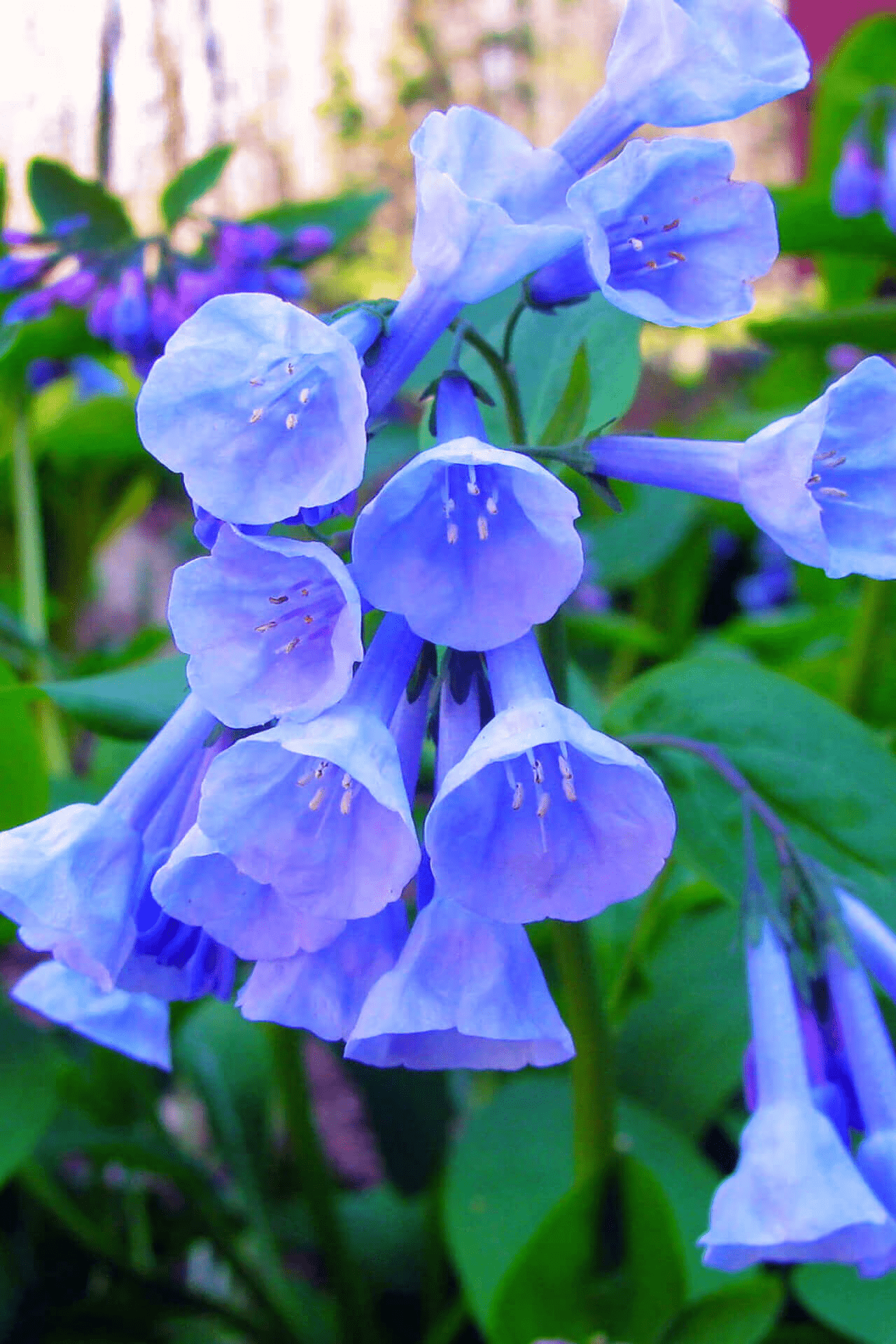
Perennials
Attracts pollinators like bees and butterflies
One of Spring's first bloomers
Bloom color ranges from pink to sky-blue
Thrives in
ZONE 3ZONE 4ZONE 5ZONE 6ZONE 7ZONE 8ZONE 9Planting Season:
Year-RoundVirginia Bluebell is a spring-blooming wildflower native to the United States recognized for its delicate, bell-shaped, sky-blue flowers forming clusters and carpeting the forest floor in early spring. It is a captivating perennial plant that offers numerous benefits when incorporated into landscaping designs. Its enchanting appearance and adaptability have made it a favorite among gardeners and landscapers.
These flowers start as shades of pink and gradually transition to a soothing sky-blue hue, creating a stunning gradient effect that adds a touch of elegance to any landscape. The lush green foliage further complements the vibrant blooms, enhancing the overall visual impact.
Besides its visual appeal, it is positively adjustable to various soil types, making it a perfect option for landscaping projects in multiple environments. Its preference for partially shaded to fully shaded areas makes it ideal for underplanting trees or placing them along the edges of woodland gardens. This versatility allows landscapers to create visually appealing designs catering to light conditions.
Another benefit of incorporating them is their role in supporting local ecosystems. These plants are attractive to pollinators such as bees and butterflies, making them valuable contributors to biodiversity. By attracting these pollinators, they aid in reproducing nearby plants and promote a healthier ecosystem within the landscape.
They also require little maintenance, making them appealing to amateur and experienced gardeners. Once established, they require minimal care, allowing landscapers to focus on other design aspects.
In conclusion, perennial plants offer a range of benefits that enhance the overall appeal and ecological value of landscaping projects. With their captivating appearance, adaptability to various environments, support for local wildlife, and low maintenance needs, these perennial plants are a valuable addition to any landscape design seeking a harmonious blend of beauty and functionality.
The Virginia Bluebell, or Mertensia virginica, is a stunning and delicate native wildflower that graces eastern North America's woodlands and meadows. This perennial plant, belonging to the Boraginaceae family, is renowned for its enchanting beauty and is often considered one of the most striking spring wildflowers in its native range.
Standing at heights 1 to 2.5 feet, the wildflower is a herbaceous plant that emerges from the forest floor early to mid-spring. Its growth cycle is a true spectacle as it undergoes a remarkable transformation. Initially, the plant's lance-shaped leaves are tinged with an attractive reddish-purple hue, but as they unfurl, they transition to a soft, gray-green color, creating a stunning contrast with its vibrant blue flowers.
The flowers themselves are the main attraction of the plant. They are composed of clusters of pendulous, trumpet-shaped blooms that are a breathtaking shade of sky blue or pale pink, depending on the soil conditions. These blossoms are unique because they start as pink buds, gradually shifting to their iconic blue hue as they mature. The floral clusters adorn the plant's upright stems, creating a sea of blue that sways gently in the spring breeze.
One of their most remarkable aspects is their ability to thrive in shaded woodland areas. They are often found in the dappled sunlight beneath deciduous trees, creating a serene and ethereal ambiance in these natural settings. Their preference for moist, rich soils ensures they are frequently spotted along stream banks and low-lying areas.
Aside from its visual appeal, it plays an essential ecological role. They provide nectar for early-emerging pollinators like bees and butterflies, helping to kickstart the pollination process for various plants in their ecosystem.
Its striking blue flowers and unique life cycle make it a beloved harbinger of spring, enriching the landscapes it graces and captivating all who have the privilege to witness its brief but glorious bloom.

Bloom Season
Spring
Bloom/Foliage Color
Blue
Care
Virginia Bluebell (Mertensia virginica) thrives in well-drained, rich soil. Water regularly to keep the dirt wet, particularly during dry periods. Remove spent blooms to encourage new growth. Separate plants every few years to maintain vigor and prevent overcrowding.
Plant Reproduction
Virginia bluebells spread through rhizomes and self-seeding.
Planting bare-root perennials is best in any season if they are dormant; we only sell dormant plants. Planting them year-round is also excellent if you can get dormant perennials. When your bare-root perennials arrive, soak the roots in water for a few hours to rehydrate them. Lant by digging a hole wide enough to spread the roots comfortably and deep enough to place the top portion crown (where the roots meet the stem) at or slightly above ground level. Position the plant in the hole, backfill with native soil, and gently firm the soil around the roots—water well after planting to settle the soil around the plant and eliminate air. Apply a 2-3 inch layer of mulch to keep weeds at bay and moisture locked in, keeping the mulch away from the crown. Irrigate plants regularly during the first few weeks of drought; never water in full sun, and water late in the evenings to ensure the roots are established well. Fertilize sparingly in the first year, using a balanced, slow-release fertilizer in subsequent years as needed.
Shipping date depends on the date displayed and chosen when you order from the product's page.
We only accept returns on plants verified dead. If you think your plants have died, we offer a 1 year warranty, please use use this File a Claim Link to verify dead plants and start with return warranty process.




Stunning Color Transition:
Virginia Bluebells start as pink buds and gracefully turn into soothing sky-blue flowers, offering a captivating display.
Springtime Delight:
Blooming early in spring, these perennials provide a refreshing burst of color after the winter season.
Adaptable and Easy-Care:
Thrives in shade or partial sun with minimal maintenance, perfect for a variety of garden settings.
Naturalizing Beauty:
Ideal for woodland gardens, these plants spread gently, creating a lovely, naturalized look with their graceful blooms.
Caring Tips
Each box contains detailed care instructions and information about your product. But here's the basics.
Care Tips
Virginia Bluebell (Mertensia virginica) thrives in well-drained, rich soil. Water regularly to keep the dirt wet, particularly during dry periods. Remove spent blooms to encourage new growth. Separate plants every few years to maintain vigor and prevent overcrowding.
Light Requirements
Virginia Bluebells (Mertensia virginica) thrive in partial to full shade, making them ideal for woodland gardens. They prefer dappled sunlight but can tolerate early morning sun. Too much natural sunlight can push the leaves to wilt or scorch.
Hardy Planting Zones
3 • 4 • 5 • 6 • 7 • 8 • 9
How often should I water my plants?
How do I know if my plant is getting too much or too little sunlight?
What should I do to prepare my plants for winter?
What are the signs that my plant needs fertilizing?
How can I prevent pests from damaging my plants?
How do I choose the right plant for my climate zone?